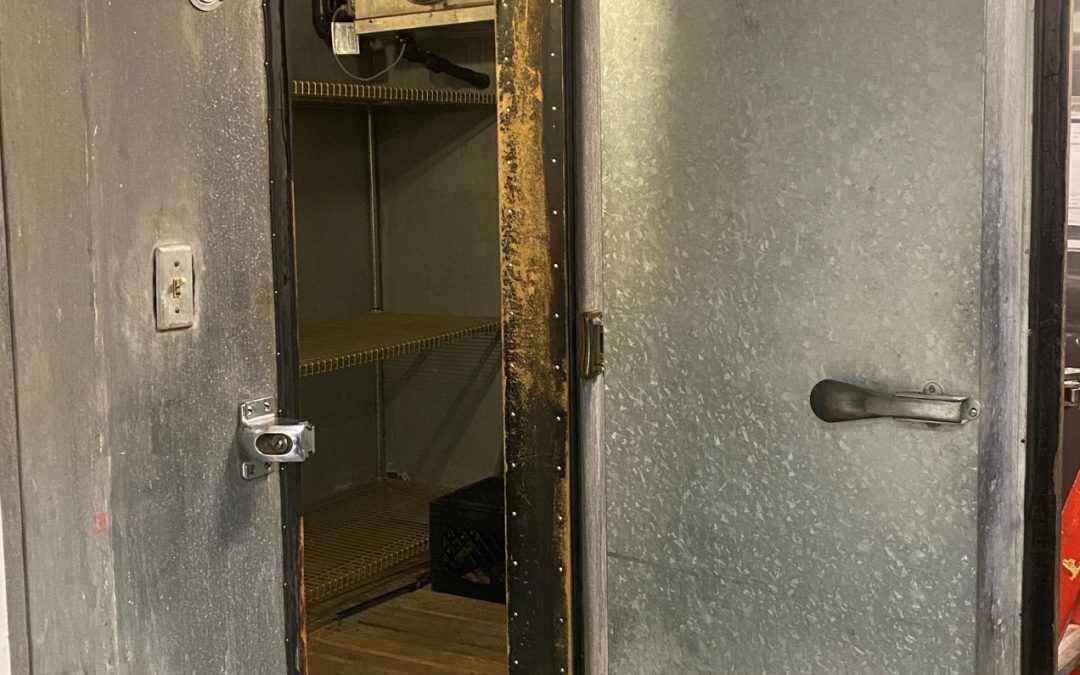Recently, while on a job in a small town near Lubbock, the SPECS team encountered a walk-in refrigerator in a school cafeteria that was over 40 years old and still running with original parts. The school was consulting with SPECS about a possible system replacement due to the age of the unit and the fact that the temperature had not been as stable lately. While a full system replacement was advisable in their case, it is not always the first thing we will suggest when looking at an older walk-in unit. If a walk-in unit is maintained properly with consistent checks and necessary repairs however, walk-in refrigerators and freezers can last well beyond their years.
Manufacturers estimate the average lifespan of a walk-in cooler or freezer is about 15 years, but there are plenty of advisable maintenance strategies to extend that life expectancy. Employees can be unintentionally hard on equipment. Doors get slammed, handles get yanked, carts get knocked into walls, and heavy loads can topple into evaporator units. At some point it’s important to compare the cost of refurbishing your walk in versus outright replacement.
You may be asking, “What makes a walk-in a good candidate for replacement?” When looking at the refrigerated box specifically, if the box is sound, as in it still holds temperature, has no water infiltration, and has no air leaks, then refurbishment is the recommended remedy. Doors, hinges, floors, and walls take the most abuse. Depending on the condition of the rest of the unit, replacing any of these specific components may be enough to keep your existing unit in service, adding years to its life.
- Doors: At SPECS, doors are the main component that needs replacement before all others. Typically, refrigeration manufacturers offer replacement doors for the units they make and repairs can be completed in a matter of a few hours. Other manufacturers even offer doors that will fit most units, making obtaining a door even easier.
- Floors: Floors are another area that can show excessive wear before other components. These areas are high-traffic and can often be underestimated during installation. A walk-in cooler installed with a flooring system designed for lighter loads is going to buckle and dent if employees drop heavy items or use carts to transport large loads. Overloaded shelving units can also dent floors, separating the surface from its insulating foam.
- Walls: Damage happens less frequently to walls than doors and floors; however, it should be monitored regularly. Carts and pallet jacks can easily punch holes in walls, compromising the integrity of the unit and decreasing the unit’s ability to pressurize properly. Acidic foods can also erode wall panels, eventually leading to holes in the panels that have to be replaced immediately.
On the refrigeration system side, evaporator coils, condenser coils, and fan motors seem to be the most frequent issues. While the coils themselves can be very costly to replace, independent elements like fan motors are relatively affordable and easy to change out. Manufacturers recommend that if your unit has both structural and refrigeration elements that need replacement, it is best to proceed with a full-scale system replacement. However, making that distinction can be difficult. So if you are weighing your options and unsure of which avenue to proceed, call SPECS and have our licensed technicians give you the inside scoop on which to pursue.


Recent Comments